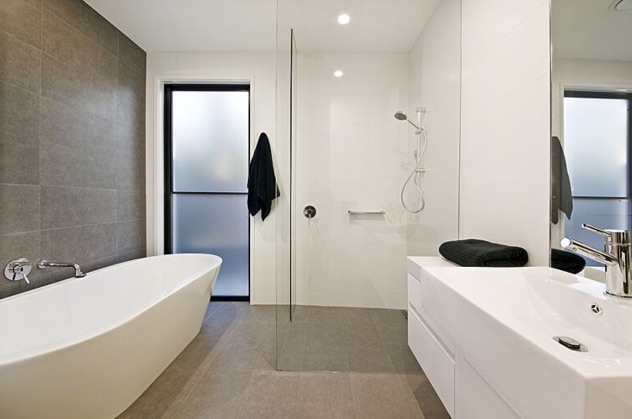Walk-in showers, defined by their seamless, curbless designs, have surged in popularity in modern home renovations. These elegant installations not only enhance a bathroom’s aesthetic appeal but also cater to a broad demographic, making them a top trend in bathroom design worldwide.
Choosing a walk-in shower offers numerous benefits, from increased accessibility to sophisticated simplicity. Curious about what a walk-in shower might cost you? Continue reading as we delve into the various types and break down the potential expenses involved in installing your very own walk-in shower.
Exploring Walk-In Shower Types and Cost
Choosing the right type of walk-in shower can significantly enhance your bathroom’s functionality and aesthetic. Whether you’re updating an old shower or planning a full bathroom remodel, understanding the different types of walk-in showers available will help you make an informed decision.
Here, we explore various models, from custom to curbless, each tailored to meet specific needs and preferences.
Types of Walk-In Showers
As of 2024, the cost of installing a walk-in shower can vary widely depending on the type and features chosen. Below is a breakdown of different walk-in shower types, detailing their features and the associated costs based on the latest market research.
Custom Walk-In Shower
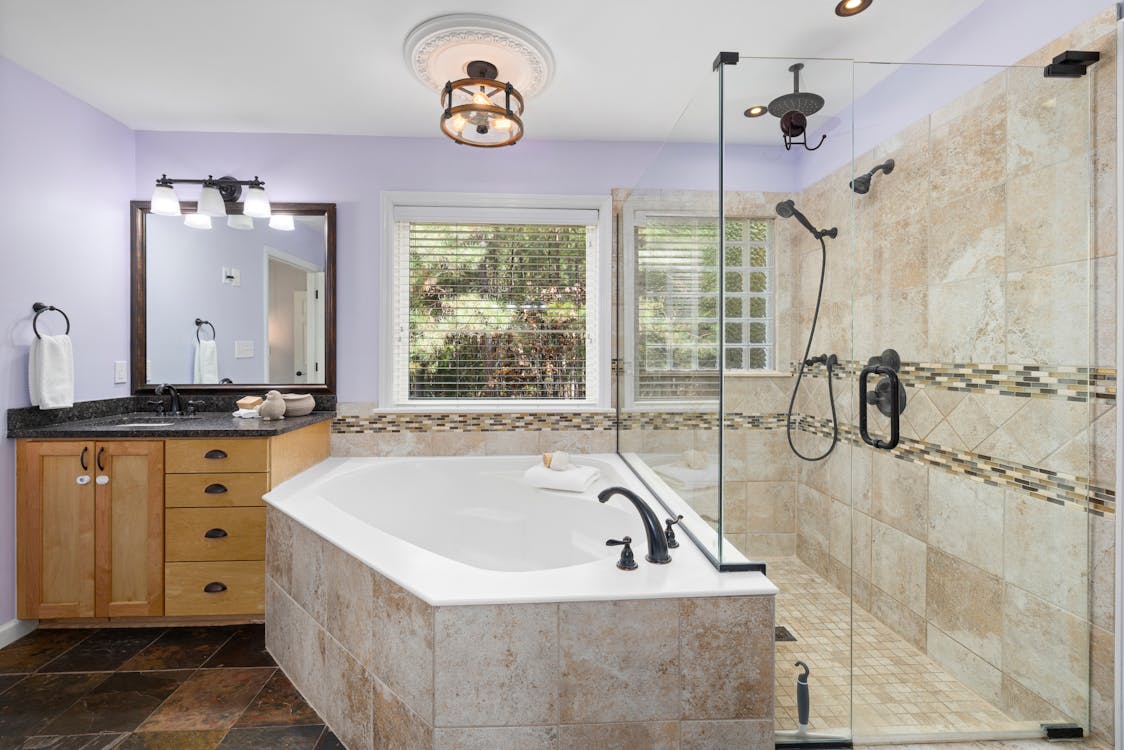
Custom walk-in showers are ideal for those who want a tailored bathroom experience. These showers are designed to fit specific dimensions and preferences, incorporating features like multiple shower heads, custom tiling, and unique glass doors. The costs for custom walk-in showers typically start around $3,500 and can exceed $15,000, depending on the complexity of the design and the materials used.
Prefabricated Walk-In Showers
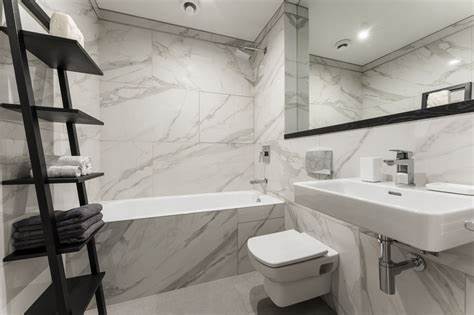
A prefabricated walk-in shower can offer a more budget-friendly alternative, with prices ranging from $1,000 to $6,000. These prefab showers come as pre-assembled kits that are easier and quicker to install, significantly reducing labor costs. They are available in various average walk-in shower sizes and styles, making them a convenient option for quick renovations.
Luxury Walk-In Showers
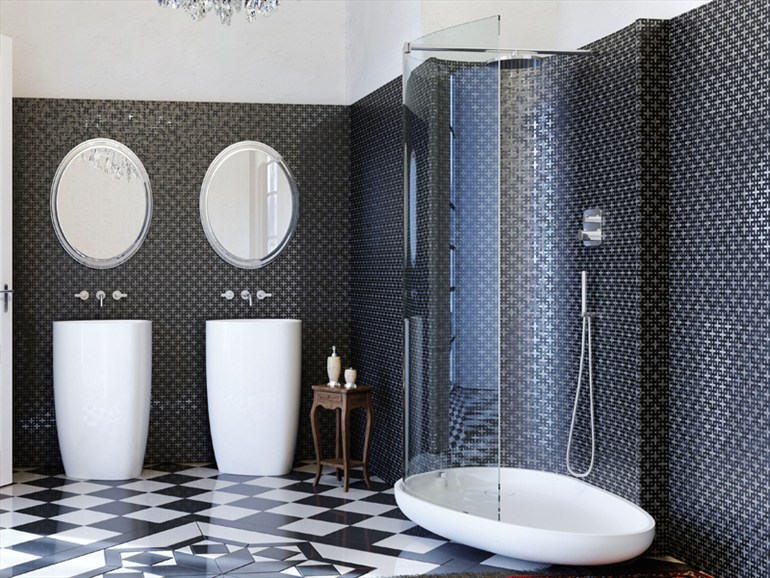
Luxury walk-in showers are the epitome of comfort and opulence, featuring high-end materials such as stone or designer tiles, advanced technologies like digital controls and steam capabilities, and additional comforts such as integrated seating or heated floors. Prices for luxury walk-in showers can start at around $10,000 and go up to $30,000 or more, reflecting the premium materials and custom features involved.
Standard Walk-In Showers
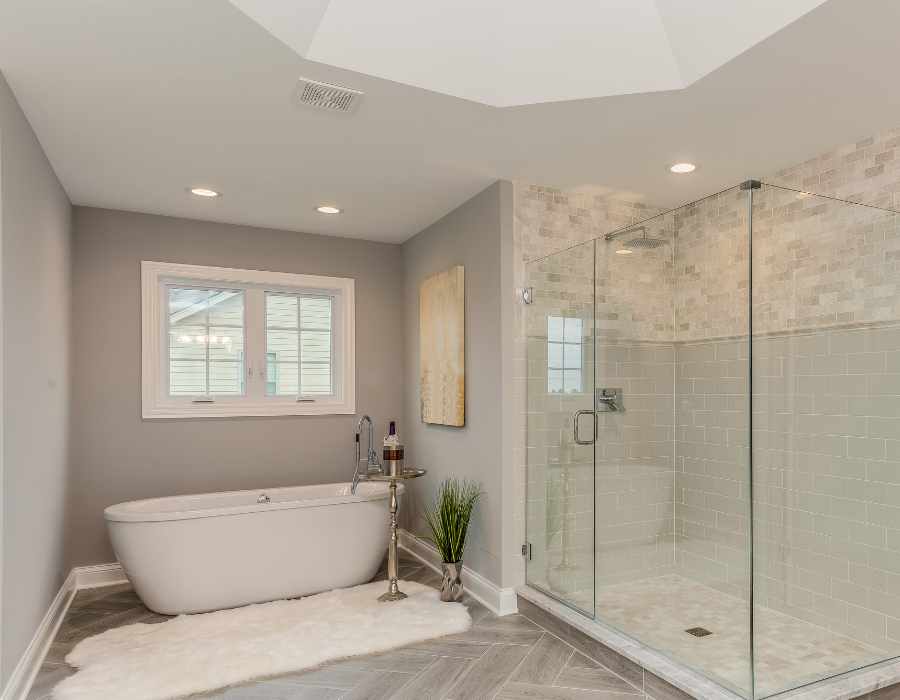
Standard walk-in showers are the most straightforward option, typically consisting of a simple shower area with basic fixtures. These are often chosen for their practicality and ease of use, and their costs range from $1,500 to $5,000. The lower end of this range would cover basic materials and installation, while higher costs would involve higher-quality materials and finishes.
Curbless Walk-In Showers

These walk-in showers are known for their accessibility, and modern design requires specific construction techniques to ensure proper drainage and waterproofing. The costs for a curbless walk-in shower usually start around $5,000 and can increase depending on the bathroom layout and the finishes selected. The additional need for a sloped floor for water management and non-slip tiles can also influence the final price.
Detailed Walk-in Shower Cost Analysis
When considering adding a walk-in shower to your bathroom, understanding the full scope of the costs involved is crucial. This detailed analysis covers everything from the basic costs of materials and labor to the more nuanced factors that could influence your overall expenditure.
Influencing Factors
Several key elements can significantly impact the total cost of installing a walk-in shower:
- Type of Shower: The choice between prefab, custom, and luxury showers affects walk-in shower costs due to differences in materials and the complexity of installation.
- Scope of Project: Costs vary depending on whether you’re replacing an existing shower or undertaking a full bathroom renovation. Expanding the shower size or converting it from a bathtub requires additional labor and materials.
- Design and Features: Custom features like multiple shower heads, custom tile work, and built-in seating can escalate costs.
- Local Building Codes: Compliance with local regulations may require additional work and materials, influencing the overall expense.
Material and Labor Costs
The costs associated with walk-in shower materials and labor form the bulk of expenses in a walk-in shower installation, and they vary widely based on quality and complexity:
Common Materials Used:
- Shower Pan and Floor: Options range from simple prefab bases to custom-tiled designs. Prefab units might cost a few hundred dollars, while custom work could run into thousands.
- Walls and Enclosures: Acrylic or fiberglass kits are at the lower end of the cost spectrum, while custom glass panels or tiled walls are more expensive.
- Shower Doors: Glass doors vary from standard framed models to high-end frameless styles.
- Accessories and Add-ons: Features like benches, niche shelves, and luxury fixtures can make a few additional costs.
Pricing of Materials:
- Per Square Foot: Tiling can range from $2 to $25 per square foot, depending on the material (ceramic, porcelain, stone).
- Shower Kits: Complete prefab shower kits, depending on size and features, can cost from $800 to over $5,000.
- Custom Elements: Custom glass enclosures or intricate custom tile shower patterns are priced higher due to the labor and skill required.
Labor Costs:
- Installation Fees: Typical labor costs for shower installation can range from $500 to $2,500 or more, based on the complexity of the project and local rates.
- Additional Labor: Modifications like moving plumbing lines or reinforcing floors for heavy materials increase labor costs.
Understanding these costs will help you plan a walk-in shower project that meets your expectations and stays within your budget.
Always consult with a professional bathroom remodeling contractor to get accurate quotes based on your specific project details and geographic location.
Maintenance Insights for Walk-In Showers: Cost-Saving Strategies
Maintaining a walk-in shower efficiently not only extends its lifespan but also significantly reduces the need for costly repairs and replacements. By adopting the right maintenance practices, you can ensure that your walk-in shower remains a functional and attractive feature of your home.
Routine Cleaning

Regular cleaning is crucial to prevent the buildup of soap scum, mildew, and grime. A daily quick wipe-down of the shower after each use can prevent water spots and mildew growth, while a more thorough cleaning with mild, non-abrasive cleaners should be done weekly. Focus on areas like glass doors and shower walls where buildup is most common.
Preventive Maintenance
Taking proactive steps can help avoid major repairs. Regularly checking and reapplying caulk or sealant around the shower pan and glass enclosures annually can prevent leaks. For households with hard water, installing a water softener can prevent mineral buildup on fixtures and glass, which can be difficult and costly to clean over time.
Smart Upgrades
Investing in high-quality materials and fixtures can save money in the long run. Opt for durable, high-quality shower head and faucet that are less likely to need frequent replacement. Choosing anti-microbial materials for shower surfaces, such as treated glass for doors and non-porous tiles for walls and floors, can help resist mold and mildew, thereby reducing cleaning and maintenance needs.
Regular Inspections
Keeping an eye on potential issues can prevent them from becoming expensive problems. Regularly inspect your shower for signs of water leakage or damage, as early detection can save significant repair costs and prevent structural damage. Check and tighten any loose screws on shower doors or fixtures, and replace worn-out parts like washers and gaskets to maintain optimal functionality and prevent leaks.
Efficient Use of Space
Organizing the shower and tub area effectively can prevent damage and reduce clutter. Using caddies or shelves to keep products off the floor reduces the risk of slipping and product spillage. Ensuring good air circulation within the bathroom is also important; it helps to quickly dry out the shower area, reducing the risk of mold and mildew growth.
Professional Maintenance
Sometimes, it’s cost-effective to invest in professional help. Having a professional plumber inspect your shower and plumbing annually ensures everything is functioning correctly, which can help catch issues before they require expensive repairs. Additionally, for deep stains or mineral buildup, a professional cleaning once a year can restore the look of your shower without the need for harsh chemicals.
Designing Walk-In Showers for Specific Needs

Designing a walk-in shower involves more than just aesthetic choices; it requires careful consideration of the needs of all users to ensure safety, accessibility, and functionality.
Certain features can greatly enhance the usability and safety of the space when planning a walk-in shower, particularly for families with young children or elderly adults.
Family-Friendly Features
Creating a family-friendly walk-in shower requires incorporating elements that cater to the safety and functionality of children:
- Low Threshold: A curbless or low-threshold entry is safer for children and reduces the risk of trips and falls.
- Non-Slip Flooring: Opt for textured tiles or non-slip mats to make the shower floor safer for little feet.
- Temperature Control: Install thermostatic controls to prevent scalding and ensure the water temperature is safe for children’s sensitive skin.
- Handheld Shower Heads: These allow for easy rinsing of children at any height and can be placed within easy reach.
- Durable Materials: Choose materials that are both durable and easy to clean, like porcelain or cultured marble, to withstand rigorous use by children.
- Storage Solutions: Include built-in shelves or baskets at lower heights so that children can easily reach their own bath toys and products.
Accessibility for the Elderly
Ensuring ease of use and safety for older adults involves several tailored modifications:
- Curbless Entry: A smooth transition from the bathroom floor into the shower area is essential for preventing trips and accommodating mobility aids.
- Grab Bars: Strategically placed grab bars can provide stability and support for elderly users moving in and out of the shower.
- Seating Options: A built-in bench or a removable shower seat offers a place to rest and manage bathing tasks with ease.
- Adjustable Shower Heads: Incorporating adjustable or handheld showerheads allows elderly users to control the direction and height of the water stream.
- Clear Space: Ensure there is ample room within the shower for moving around, which is especially important for those who may need caregiver assistance.
- Bright Lighting: Adequate lighting is crucial for elderly users to navigate the space safely and avoid slips and falls.
Designing a walk-in shower with these specific considerations enhances the bathroom’s functionality for family members of all ages and ensures that the space can safely accommodate individuals’ changing needs over time.
The Impact of Walk-In Showers on Home Value
Walk-in showers have become a coveted feature in modern home design, enhancing both the functionality and aesthetic appeal of bathrooms. Their installation is not just about upgrading a bathroom but also about boosting the overall value of your home.
Here’s how walk-in showers can significantly impact your property’s marketability and resale value.
Home Resale Value Analysis
Installing a walk-in shower can indeed increase home resale value for several compelling reasons. Walk-in showers appeal to a broad market, including families with young children and older adults who benefit from the accessibility of curbless designs.
This universal appeal makes them a strong selling point during property listings. Bathroom remodels that include upgrades like walk-in showers tend to yield a high return on investment.
Options like prefabricated shower kits or custom shower costs can be adjusted to balance budget and luxury, appealing to those not wishing to fully customize. Integrating shower accessories, such as a manufactured shower pan or shower enclosure, enhances functionality and aesthetics, adding value.
Guest Bathroom Considerations
Enhancing a guest bathroom with a walk-in shower can also significantly affect the overall appeal and functionality of a home. A luxurious guest bathroom equipped with a walk-in shower not only leaves a lasting impression on visitors but also potential buyers, thereby enhancing the property’s marketability.
Walk-in showers, particularly those designed with minimalistic features and elegant fixtures like manufactured shower pans and sleek shower heads, can transform a small guest bathroom, making it appear more spacious and inviting.
The versatility in design—ranging from prefab shower kits to elaborate custom showers—allows homeowners to create a distinctive look that complements the overall decor of the home. This customization can go a long way in boosting the aesthetic appeal of even the most compact spaces.
Frequently Asked Questions
How much does a walk-in shower cost?
The cost to install a walk-in shower can vary widely based on several factors, such as the type (custom, prefabricated, etc.), materials used, size, and complexity of the installation. On average, costs can range from $1,000 for basic prefabricated models to over $15,000 for luxurious, custom designs that include high-end materials and features.
What are the benefits of installing a walk-in shower?
Walk-in showers offer enhanced accessibility, ease of use, and a modern aesthetic that can increase the value of your home. They are also easier to clean and maintain than traditional bathtubs and can be customized to fit any bathroom layout and design.
Can a walk-in shower increase my home’s resale value?
Yes, walk-in showers are generally considered desirable features in modern homes and can increase a property’s appeal and value, especially when designed with contemporary materials and features like glass doors, custom tiling, and luxury fixtures.
Are there additional costs involved in installing a walk-in shower?
Beyond the basic installation, costs can include upgrading plumbing, adding custom features like shower pans and enclosures, and sometimes expanding the existing bathroom space. Additionally, high-quality materials like cultured marble or custom tile work can increase the overall investment.
Final Thoughts
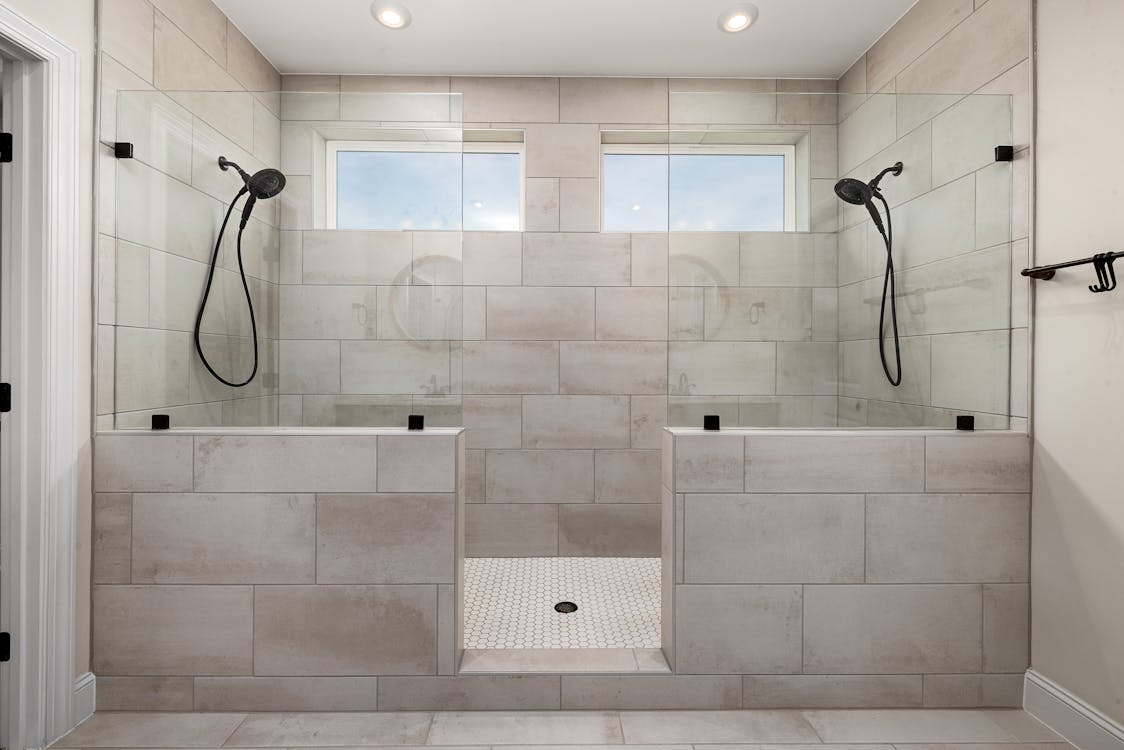
Installing a walk-in shower involves careful consideration of both benefits and costs. Walk-in showers not only enhance the functionality and aesthetics of your bathroom but also cater to a wide range of personal needs and preferences—from families with young children needing easy access to the elderly benefiting from curbless designs.
The initial investment in a walk-in shower can be substantial, depending on your choices regarding size, style, and materials. However, the long-term benefits, including increased home value and improved daily convenience, often outweigh these costs.
When planning your bathroom renovation or new walk-in shower installation, consider all factors to make an informed decision. Assess your current and future needs, budget constraints, and potential return on investment.
If you are considering a walk-in shower, consulting with professional bathroom remodelers can provide detailed insights and help you navigate your options effectively.
